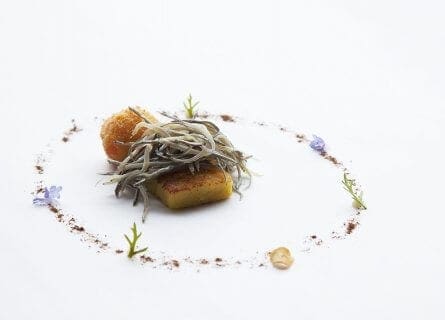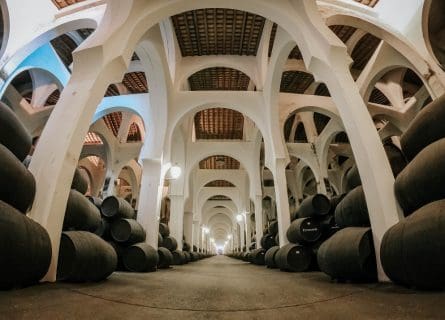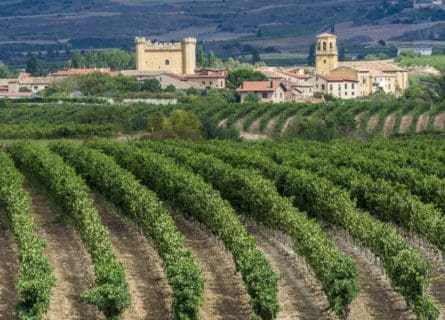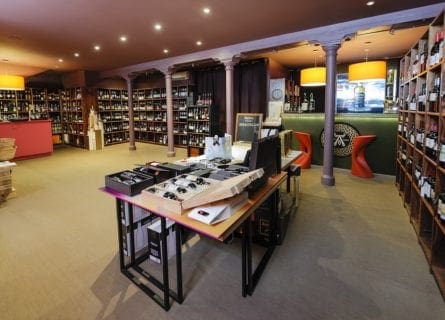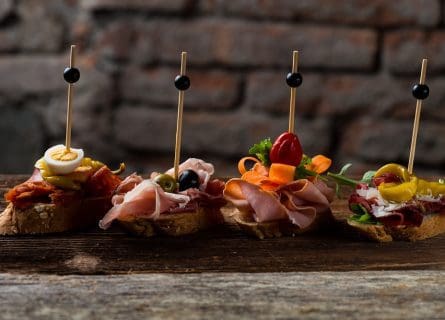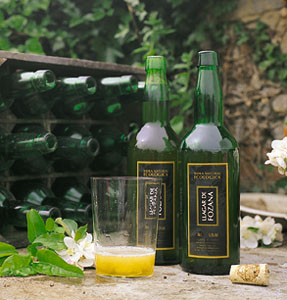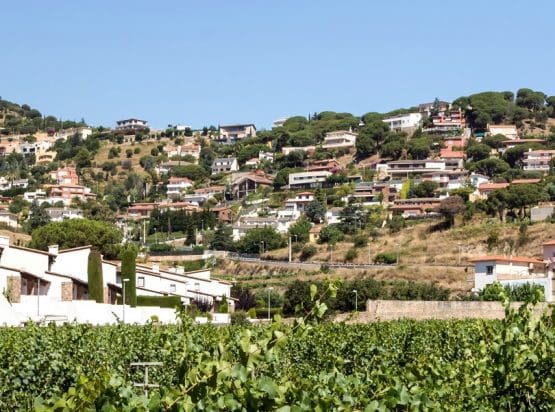
Sitges Travel Guide
Where the sun-kissed Mediterranean coastline meets irresistible Catalan cuisine and lively nightlife
Sitges, barely a half-hour away from glamorous Barcelona by train, attracts everyone from jet-setters to young backpackers, honeymooners to weekending families, Barcelona night owls, and anyone looking for a good time! The jewel of the Costa Garraf has been a fashionable, chic resort since the 1890s when it became an avant-garde, art-world hangout. Sitges boasts a long and proud history; evidence suggests that Paleolithic (Old Stone Age) people wandered around Sitges as long as 70,000 years ago. In addition, archaeological findings show that Catalunya was occupied continuously from the 6th century BC to the first century AD.
The Phoenicians and the Greeks were among the first civilizations to visit the area, followed by the Carthaginians, who marched their army north through Catalunya during the Punic wars between Carthage and Rome. However, by 197 BC, Spain (which the Romans called Hispania) was under Roman control. In the next few hundred years, the Roman way of life was implanted, and Catalunya experienced relative peace and prosperity.
However, Catalunya felt the full effects as the western Roman empire wobbled in the 5th century. Marauding Franks were among the first to subject Catalunya to death and destruction; this was, in effect, a prelude to several waves of invaders flooding the peninsula. After the Visigoths, the Moors came in 711, led by the Muslim general Tariq, who landed 7000 men at present-day Gibraltar. By 718, all of Catalunya found itself under Muslim control. Yet the situation would not last long – The Franks and local counts mounted counter-attacks, and in 785, they retook Girona. Finally, in 801, Barcelona fell after a long siege.
By the late 10th century, the Casal de Barcelona (House of Barcelona) was the region’s dominant force. The Counts of Barcelona also controlled parts of France, and under the rule of Ramon Berenguer III (1097-1131), Catalunya launched its fleet, and sea trade developed. During this period, the first recorded mention of Sitges occurs in a parchment dating back to the 10th century. During this era, many silos were discovered in Sitges, storage areas underground used to preserve food. Sitges is commonly believed to be named after the Catalan word for Silo, “sitja.”
In the 11th century, Sitges grew into a thriving town, complete with a fortified castle, in which, sadly, there are no visible remains. Local Counts in the province of Ribes had jurisdiction over the town, which became more critical as Catalunya’s sea trade expanded. Indeed, in the 13th century, Catalunya’s ruler, Jaume I, managed to conquer Mallorca, Ibiza, and Formentera, in addition to Valencia. His son Pere II took Sicily in 1282. Such a mighty empire boded well for the citizens of Sitges, who grew prosperous.
Another boon for Sitges occurred in the 14th century when the feudal Lord of Ribes passed direct control of Sitges and the broader area to an aristocratic family who, two centuries earlier, had adopted the name of the ceded territory. The head of the family, Agnés of Sitges, sold the rights to another nobleman, Bernat de Fonollar, who remained Lord of Sitges’ castle until 1326. Sitges prospered greatly from this newfound freedom, mainly as Bernat of Fonollar was King Jaume II’s right-hand man. Without a doubt, Fonollar was the most important man in the history of medieval Sitges.
Sadly, by the end of this period, the empire began to exhaust Catalunya. Sea wars with Genoa, resistance in Sardinia, the rise of the Ottoman Empire, and the loss of the gold trade all drained the coffers. Commerce collapsed. Moreover, the Black Death and famines killed about half of Catalunya’s population in the 14th century. However, better times arrived in the 15th century, when Fernando and Isabel united Spain’s two most powerful monarchies. In 1492, the last of the Muslims were ejected from Granada, and in the same year, Columbus discovered the Americas – an event that would bring enormous wealth to now-united Spain.
Unfortunately, Sitges would experience much turmoil and conflict between the 17th and 18th centuries. During the Guerra dels Segadors (Reapers War), 600 Neapolitan soldiers under the command of Felipe IV overran Sitges and pillaged the town, taking everything they could. In 1649, Sitges again came under siege for two days, repeatedly attacked by the Castilian troops of Juan de Garay (viceroy of Catalonia). This attack caused extensive damage to the town and collapsed a section of the wall, two towers, and part of the castle, which was not rebuilt until 1681.
Indeed, Sitges and wider Catalunya seemed destined to stumble from one losing cause to another. In 1714, Felipe V took Barcelona after a long siege – for Catalans, the blackest day in history. He banned writing and teaching in Catalan, ruling the once proud and independent region with an iron fist. However, Felipe was a pragmatist who allowed the Catalans some economic freedom. By the late 1720s, the wheels of the Catalan industry were at full speed, and the region became renowned for its cotton, cork, leather, and brandy exports.
Of course, it could not last. The French Revolution of 1789 brought little but bad news for Catalunya. It took six years for British troops under Wellington, the Portuguese, and some Catalans to turf Napoleon out. The net balance for Catalunya was impoverishment.
Yet by the mid-19th century, prosperity returned to Sitges and Catalunya. Industry and exports once again thrived, while Sitges became a popular retirement spot for local merchants who had made their fortunes in the Caribbean. More than 100 of the mansions owned by “Los Americans.” as they were known are dotted around the center of Sitges today.
The 20th century would be marked by the outbreak of the Spanish Civil War between the ruling government and the Nationalists commanded by Franco. In 1939, Franco seized power, and after abolishing the Catalan Generalitat, he embarked on a program of Castilianisation in Catalunya. He banned the public use of Catalan and had all town, village, and street names rendered in Spanish. After his death, Spain peacefully transitioned to democracy, and freedom and prosperity once again returned to Catalunya.
This beguiling region entered the 21st century with greater optimism and a positive sense of its identity than ever since 1714. Today, Sitges is a fitting symbol for Catalunya’s national pride, a beautiful and unspoiled resort called “the St-Tropez of Spain.” Yet Sitges is something of a chameleon – in summer, the whitewashed streets are packed with partygoers. It’s a different story in winter: the scene is far more relaxed, making Sitges the ideal destination for a chic vacation, whatever your mood.
-
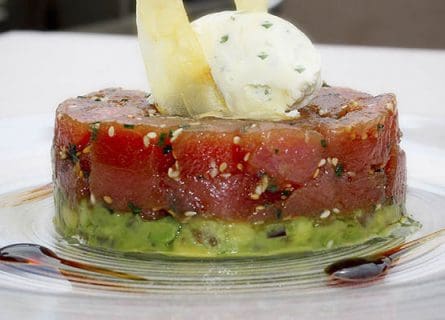
Creative cuisine in Restaurante La Fragata (see below) Gastronomy & Wine
Don’t tell the Basques, but Catalunya has been at the forefront of Spain’s culinary revolution. The region’s top chefs have greeted this new dawn with open arms and now give France’s top firmament a run for their money regarding unrestrained creativity and the dogged pursuit of ever-more superior produce. As a result, over 50 restaurants in the region now boast one or more prestigious Michelin stars, including the world-famous Celler de Can Roca.
Of course, dining out in Sitges isn’t all white tablecloth formality and expense-account prices. The town’s most famous signature dish is Xato, a delicious combination of endive salad, tuna, cod, anchovies, aubergine, and black olives. The sauce is the icing on the cake, made with scalded chilies, almonds, garlic, olive oil, and peppers. It is often served during the Saint’s Day festivals, alongside calçots and romesco sauce, a long onion served with the piquant romesco sauce – delicious as a starter! Catalunya is geographically diverse and provides a variety of fresh, high-quality seafood, meat, poultry, game, fruit, and vegetables. These can come in unusual and delicious combinations: meat and seafood (a genre known as Mar I Muntunya), poultry and fruit, fish and nuts.
Quality Catalan food is a treat, although as a significant tourist destination, Sitges offers quite a few duds and hits. The restaurants along the seafront are very touristy, but try Sitges Bon Estar for authentic home cooking and friendly service for a real treat.
All that remains is the wine pairing; in this regard, Catalunya is self-sufficient. Regions such as Montsant, Priorat, Penedes, and Costers del Segre are now internationally renowned, and with good reason! The region produces an astonishing range of wine styles, from aromatic whites to structured, age-worthy reds from Priorat. Sparkling wine is another highlight – top-flight artisan Cava is now regarded as the equal of prestige Champagne, proving that France does not hold the monopoly on superlative fizz. Recaredo, Gramona, Raventos I Blanc, and Juve Y Camps are the names to look out for.
Guide to Catalan Gastronomy: Read more
Nearby Wine Regions
-
 Explore Alella's exquisite wines, rich history, and stunning vineyards. Plan your visit to experience the best wineries and scenic beauty today! Read more
Explore Alella's exquisite wines, rich history, and stunning vineyards. Plan your visit to experience the best wineries and scenic beauty today! Read more -
 Explore the captivating wines of Catalonia with our comprehensive Catalunya Wine Region Guide. Discover the best wineries and vineyards. Read more
Explore the captivating wines of Catalonia with our comprehensive Catalunya Wine Region Guide. Discover the best wineries and vineyards. Read more -
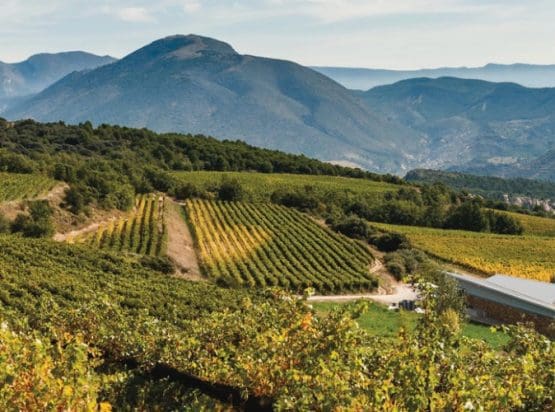 Costers del Segre in Catalunya has transformed into a renowned wine region due to Torres family's investment, planting and utilizing diverse terrain Read more
Costers del Segre in Catalunya has transformed into a renowned wine region due to Torres family's investment, planting and utilizing diverse terrain Read more -
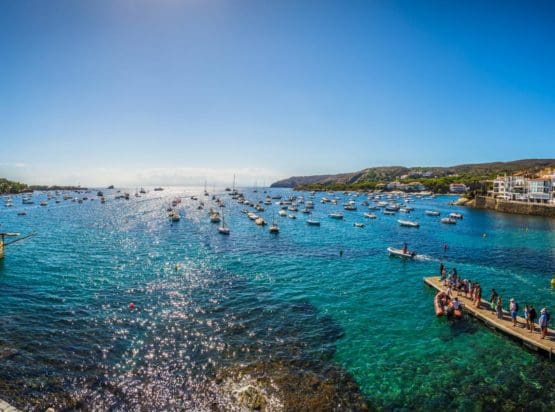 Unveil the Essence of Empordà: A Remarkable Journey through a Captivating Wine Region. Discover Hidden Delights & Savor Exquisite Flavors.Plan your trip! Read more
Unveil the Essence of Empordà: A Remarkable Journey through a Captivating Wine Region. Discover Hidden Delights & Savor Exquisite Flavors.Plan your trip! Read more -
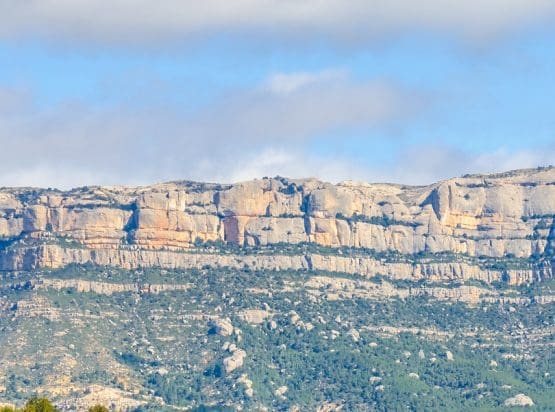 Explore Montsant Wine Region and indulge in its rich heritage. Discover award-winning wines, and breathtaking landscapes. Plan your trip today! Read more
Explore Montsant Wine Region and indulge in its rich heritage. Discover award-winning wines, and breathtaking landscapes. Plan your trip today! Read more -
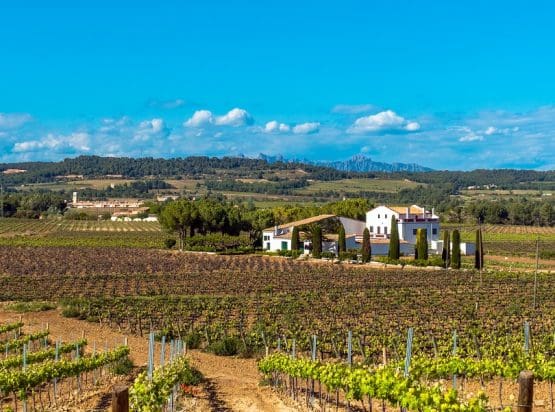 Explore Penedès: Birthplace of Cava, exceptional wines, iconic brands, sustainability. Plan your wine adventure! Read more
Explore Penedès: Birthplace of Cava, exceptional wines, iconic brands, sustainability. Plan your wine adventure! Read more -
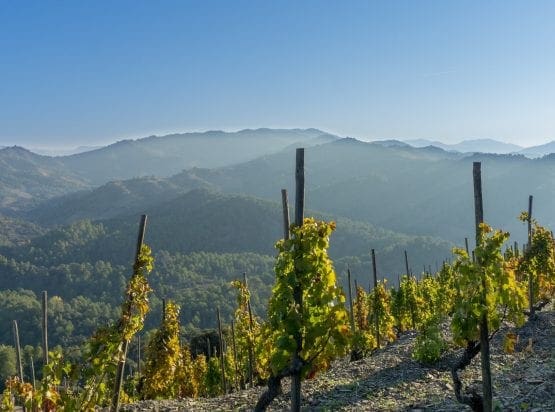 Experience Priorat, Spain's magnificent wines. Voluptuous concentration, dark fruit, and mineral-infused complexity. Join the devoted and plan your trip! Read more
Experience Priorat, Spain's magnificent wines. Voluptuous concentration, dark fruit, and mineral-infused complexity. Join the devoted and plan your trip! Read more
Highlights
-
Restaurante La Fragata
La Fragata in Sitges is a true hidden gem nestled by the shimmering Mediterranean Sea. With its humble yet elegant decor and warm, welcoming staff, this charming restaurant has been serving up some of the freshest seafood dishes for over 50 years. You be impressed by the daily catch of the day, sourced straight from the local fishing boats, and the expertly prepared dishes that let the seafood’s natural flavors shine through. It’s no wonder that La Fragata has become a favorite among locals and visitors.
-
Museu Cau Ferrat
The Museu Cau Ferrat was built in the 1890s as a house-cum-studio by Santiago Rusinol, a man who attracted the art world to Sitges. In 1894 Rusinol reawakened the public to the then unpopular work of El Greco. Today the museum houses his large art and crafts collection, which includes paintings by the likes of Picasso, Ramon Casas and Rusinol himself. The interior of the house, with its exquisite tiled walls and lofty arches, is enchanting.
-
Museu Romantic
This lovely museum is housed in a late-18th-century mansion, designed to re-create the lifestyle of a 19th-century Catalan landowning family. It boasts a collection of several hundred antique dolls, while the furnishings and dioramas are utterly beautiful.
Recommended for you
More information
If you would like us to customize an exclusive luxury tour, contact us and let us know your travel plans. We offer luxury food and wine tours for private groups of a mininium two guests. In addition, all of our private, chauffeured tours are available year-round upon request.

Cellar Tours
Welcome to Cellar Tours, the premier Luxury Travel Specialist since 2003. Our goal is to provide you with the ultimate food and wine vacation experience, with exclusive Mercedes chauffeured tours that showcase the best of local cuisine and wines.
Our team specializes in crafting bespoke, custom-designed vacations, events, and incentives tailored to your unique tastes and preferences. Travel is not just about seeing new places - it's about creating unforgettable memories and indulging in the finer things in life.
As members of Slow Food, OTAVA (Travel Agency Association in Spain), and the IACP (International Association of Culinary Professionals), we promote sustainable tourism and support local communities. We work closely with top-rated hotels, restaurants, and wineries to provide you with the highest level of service and attention to detail.
Whether you're planning a romantic getaway, a family vacation, or a corporate retreat, let Cellar Tours be your guide. With our passion for food and wine, extensive knowledge of local culture, and dedication to exceptional customer service, we're confident we can exceed your expectations.
Contact us today to start planning your dream vacation – we can't wait to hear from you!


